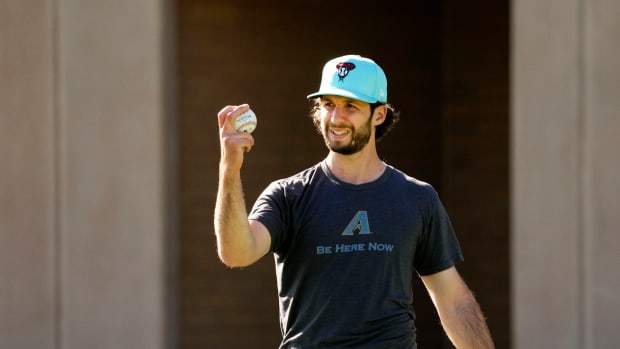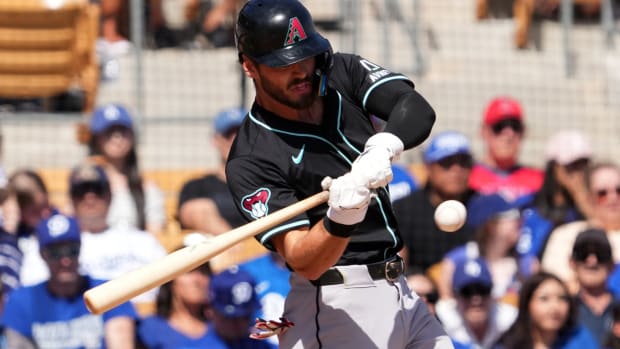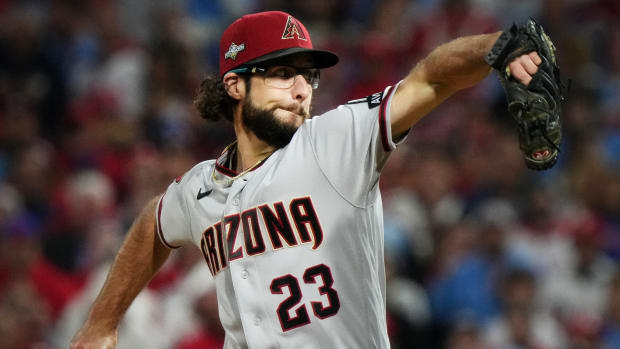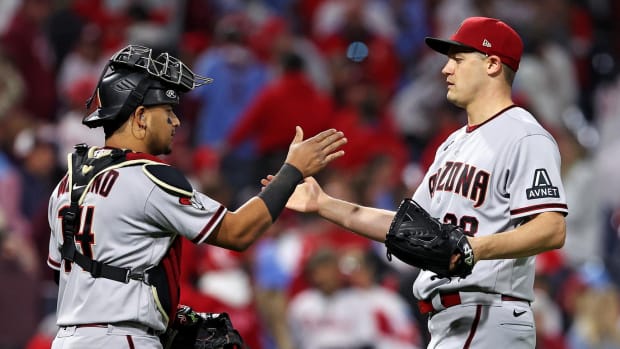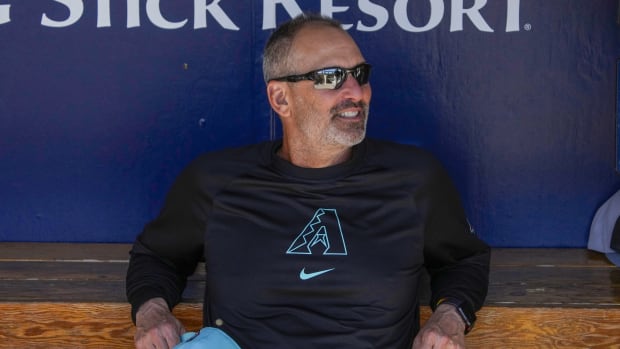
Diamondbacks Have Added Velocity to the Bullpen This Off-Season
The Diamondbacks made it a goal this off-season to add some more velocity and power arms to their bullpen after having one of the worst in baseball in 2022. The team has added three pitchers that can hit 100 MPH recently. First they added prospect Justin Martinez to the 40-Man roster and also traded for prospect Carlos Vargas. Both of these players are expected to start the year in the minors but should be up in the majors and contributing before too long.
A more immediate move to bolster the Major League roster was the signing of Miguel Castro, which Mike Hazen discussed here. They are also rumored to be in the race to sign Shintaro Fujinami out of the Nippon Professional Baseball League. Fujinami has been a starter most of his career, but his stuff profiles as a power reliever in the major leagues.
On media day, general manager Mike Hazen acknowledged they needed to add more power and strikeouts to their bullpen. The past two seasons, the team relied more on pitch-to-contact types to fill out key bullpen spots, ranking 14th and 15th in average fastball velocity. It was a big problem in 2022, as they ranked dead last in strikeout rate (19.7%). In critical situations, they were unable to get a strikeout and avoid putting pressure on the defense due to too many balls in play. Those balls in play often all too often resulted in hits, errors, and runs scoring, leading to a league-worst 41 losses by the bullpen.
So why is it important for the D-backs to add velocity to their bullpen? We took a look at all relievers in 2022 and compared their average fastball velocity and their strikeout rate and separated them into three different groups based on an minimum number of innings pitched.
On all three graphs there is a positive relationship between velocity and strikeouts, but the correlation isn't particularly strong. Here are the R-squared values for each innings threshold.
| Minimum Innings | R-Squared |
|---|---|
20 | 0.158 |
40 | 0.143 |
Qualified (48.2) | 0.164 |
Having such low R-squared values on strikeout rate vs. average fastball velocity, there are other factors that come into play. Fastball command plays a part into that, but the ability to use secondary pitches to generate those swings and misses is becoming more critical. Fastball usage amongst relievers has gone significantly down the past five seasons, dropping from 57% to just over 50%.
| Year | Fastball% |
|---|---|
2018 | 57.0% |
2019 | 53.6% |
2020 | 52.0% |
2021 | 52.7% |
2022 | 50.7% |
Looking at the three main additions to the bullpen, Castro is the only one that has previous MLB experience. He is also another example of a pitcher moving off his fastball and throwing more sliders, as he went from 42.8% fastball and 35.3% slider in 2021 to 36.5% and 44.5% in 2022. It was something that made sense, as the weighted on-base average (wOBA) surrendered on the pitches were .490 on the sinker and .261 on the slider.
Looking at both Martinez and Vargas, they both fit the mold of a vertical movement profile with the 4-seam fastball with a slider and changeup. In the case of each pitcher, Martinez has a better splitter whereas Vargas has a better slider. Both a fastball/slider and fastball/splitter profile have worked in Arizona in the past, especially the latter.
The hope is that these guys can help some established relievers such as Joe Mantiply, Kyle Nelson, and Kevin Ginkel in addition to a bounce-back season from veteran Mark Melancon to avoid a third straight year of having one of the worst bullpens in baseball.





